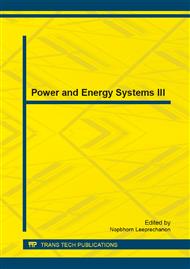[1]
Zhang, baocheng. Experimental and testing techniques for aero-engine [M]. Beijing: Beijing Aeronautics and Aerospace University Press, (2005).
Google Scholar
[2]
Li, feng. Failure analysis of compressor blade of certain type of engine [D]. Xi'an: Air force engineering university, (2004).
Google Scholar
[3]
Fu, guoru, Yu, zhemin, Wang, hongwei. Characteristics and regularity of common failure modes of compressor blade of aero derivative gas turbine[J]. Failure Analysis and Prevention, 2006, 1(1): 18-24.
Google Scholar
[4]
Cowls B.A., 1996, High cycle fatigue in aircraft gas turbines-An industry perspective, int. J. Fract., 80, pp.147-163.
DOI: 10.1007/bf00012667
Google Scholar
[5]
Nicholas, t., 2006, High cycle fatigue: A Mechanics of Materials Perspective, Elsevier.
Google Scholar
[6]
Oakley S.Y., Nowell,D., 2007, Prediction of the combined high-and low-cycle fatigue performance of gas turbine blades after foreign object damage, int.J. Fat., 29(1), pp.69-80.
DOI: 10.1016/j.ijfatigue.2006.02.042
Google Scholar
[7]
Zhong, qunpeng, Tian, yongjiang. Base for failure analysis and protection. Mechanical Industry Press. (1989).
Google Scholar
[8]
Zhuang, donghan. Failure analysis of material, East China University of Science and Technology Press, (2009).
Google Scholar
[9]
Derek Hull (English). Fractography (the science connected with observing, measuring and analyzing the appearance of fracture). Science Press, (2009).
Google Scholar
[10]
Chief Editor: Zhong, qunpeng. Diagnosis, Prediction and prevention of material failure. Central South University Press, (2009).
Google Scholar
[11]
Li, liming. Practical course of ANSYS Finite element analysis. Tsinghua University Press, (2005).
Google Scholar
[12]
Ye, xianlei, Shi, yajie. Application examples of ANSYS engineering analysis software. Tsinghua University Press, (2003).
Google Scholar
[13]
Song, yaohong. Strength design of aero derivative gas turbine. Beijing University of Aeronautics and Astronautics Press, (1988).
Google Scholar
[14]
Aero derivative gas turbine design manual (Volume 18), Strength analysis of blade disk and main shaft. Aviation Industry Press, (2001).
Google Scholar
[15]
Data manual of material for aero-engine design (Volume 3), Aviation Industry Press, (2008).
Google Scholar


